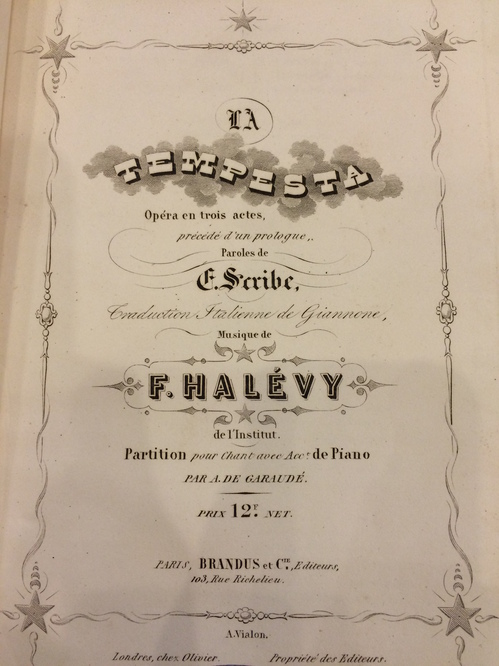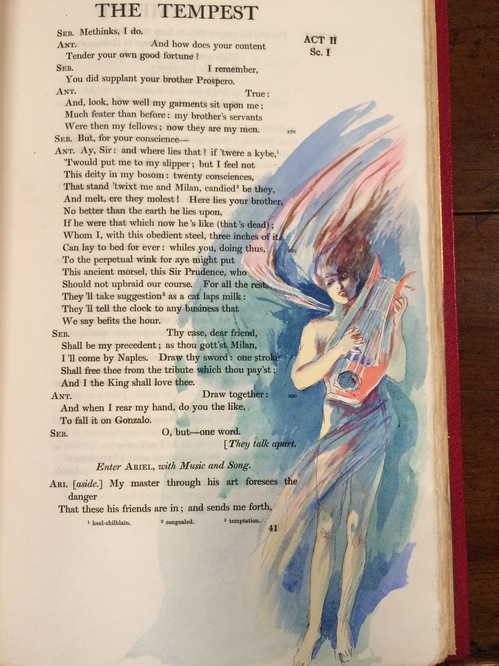This week, in preparation for our exhibit, I’ve been thinking more about versions. More specifically, different versions of the same thing. So today, I’ll be talking about four different versions of The Tempest. I found some pretty cool stuff in the Honnold special collections, as well as in the collection at Denison Library (Scripps College). Not only did I see beautifully illustrated editions with the unaltered text, but I even found two operas.
Normal
0
false
false
false
EN-US
JA
X-NONE
/* Style Definitions */
table.MsoNormalTable
{mso-style-name:”Table Normal”;
mso-tstyle-rowband-size:0;
mso-tstyle-colband-size:0;
mso-style-noshow:yes;
mso-style-priority:99;
mso-style-parent:””;
mso-padding-alt:0in 5.4pt 0in 5.4pt;
mso-para-margin:0in;
mso-para-margin-bottom:.0001pt;
mso-pagination:widow-orphan;
font-size:12.0pt;
font-family:”Times New Roman”;}
In the vein of co-creative influence
and difference, I want to quickly talk about two illustrated editions and the
illustrator’s choices (which impact a reader’s interpretation). The first book
contains watercolor illustrations, creating a softer overall image. The second
takes a more whimsical, almost sinister or mischievous approach.
In this first edition, Ariel is more
human than magic. He could be a fairy or an ordinary man based on his
appearance.
In contrast, the second edition
portrays his as more spritely, with more pointed features, as well as more
magical characteristics.
We see Ariel as a formless force,
clearly a magical being, but also with the suggestion that he himself is
elemental, is the wind.
These two different sets of
illustrations further point to the versatility of interpretation in The Tempest (as well as many of
Shakespeare’s other works). In each one, we see an artistic twist, but in each
we can see the core of the source, Shakespeare’s magical tale of an abandoned
island where music is in the wind and creatures lurk just out of sight.



